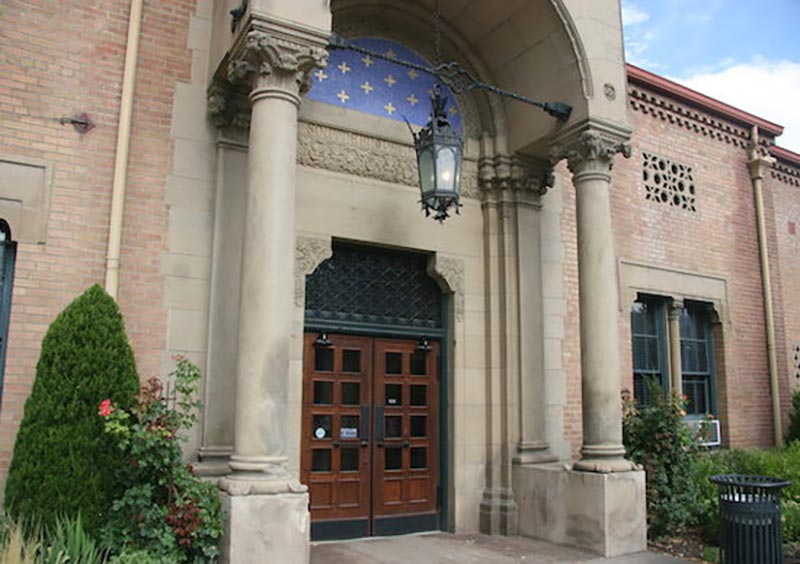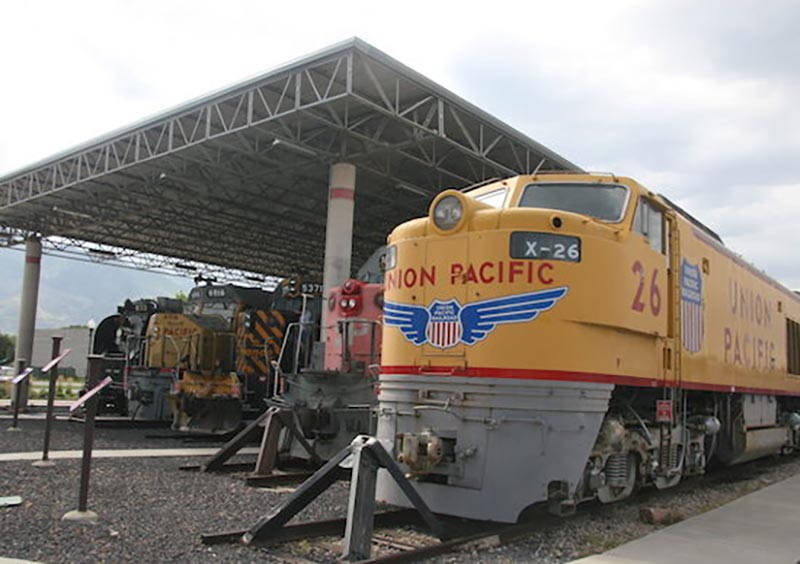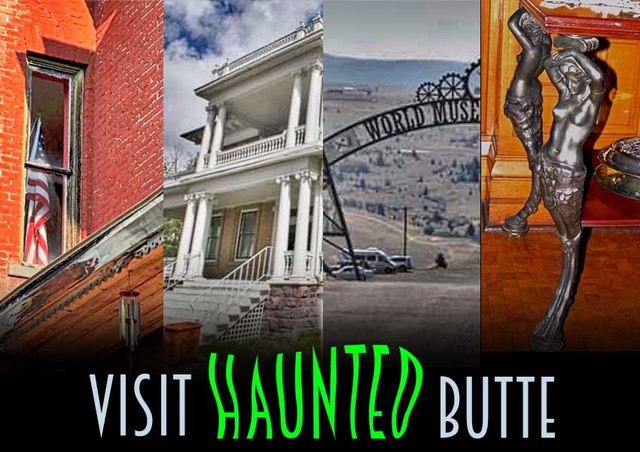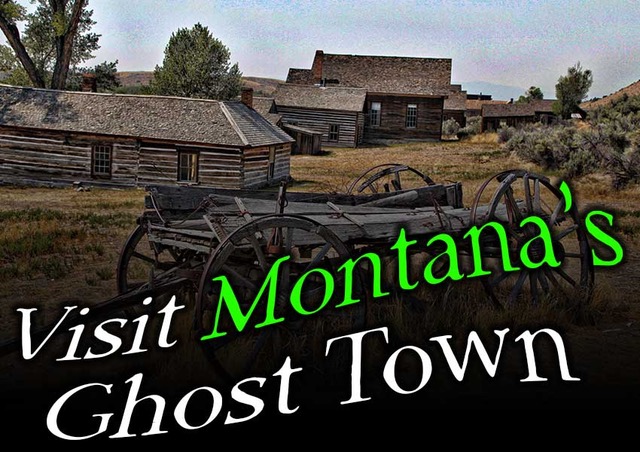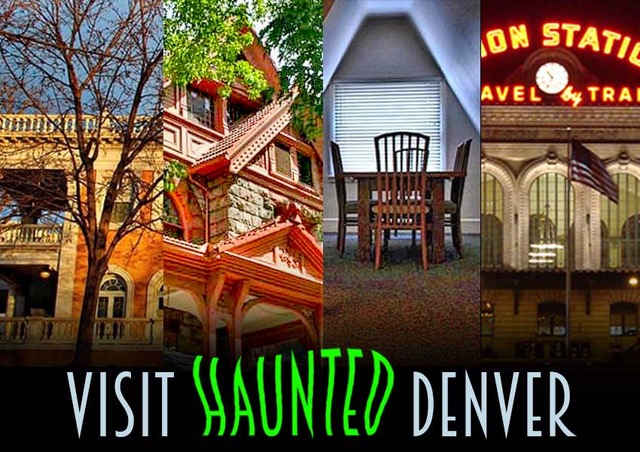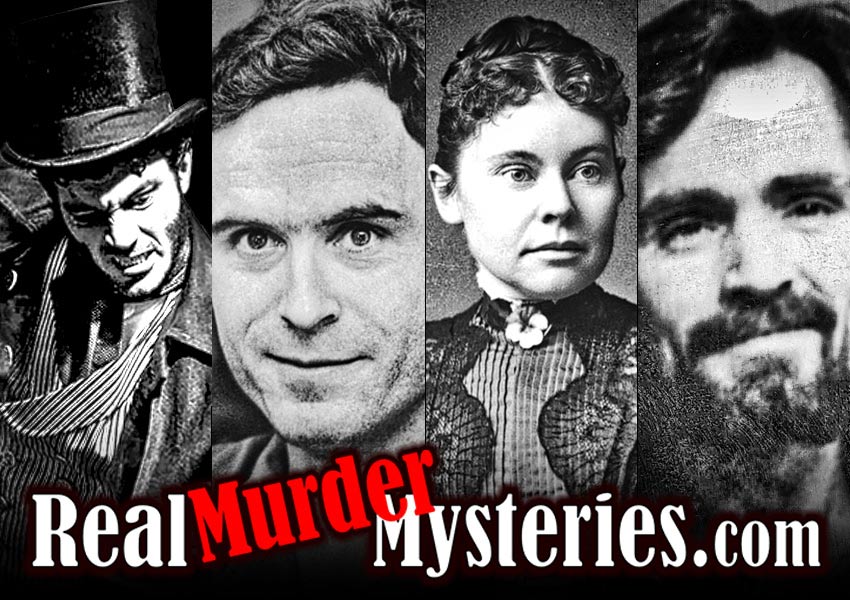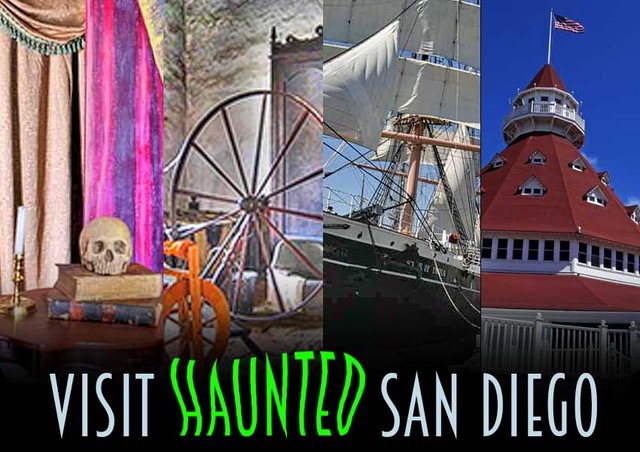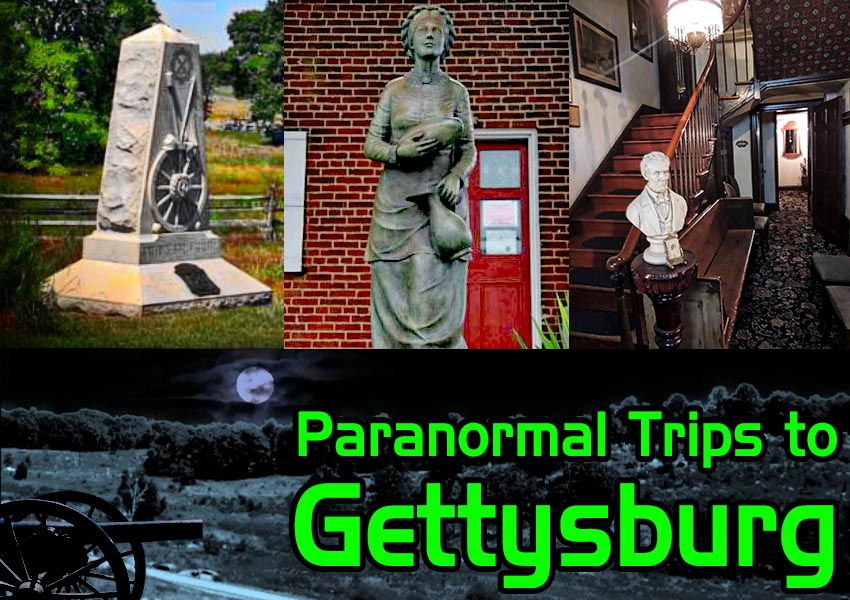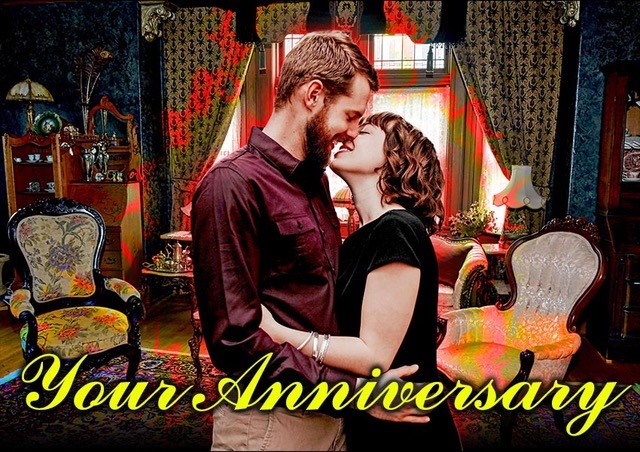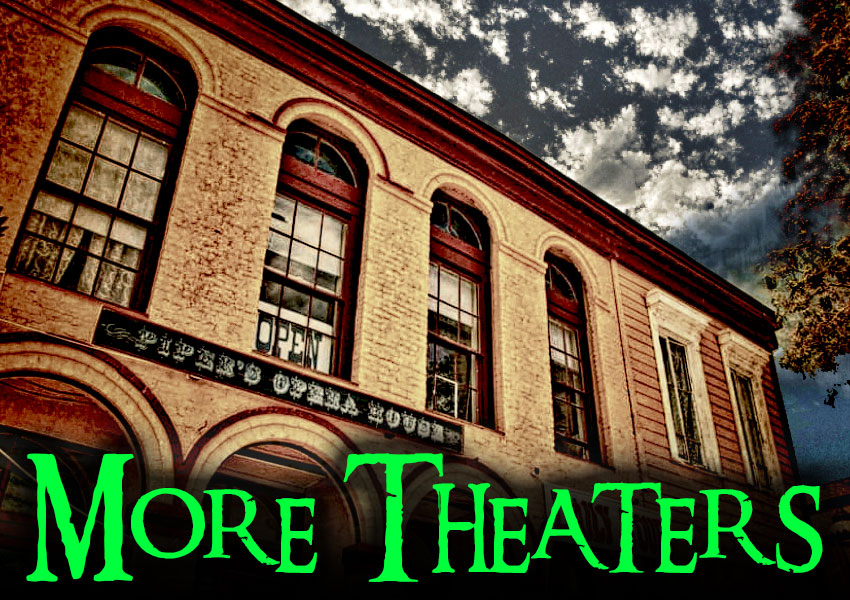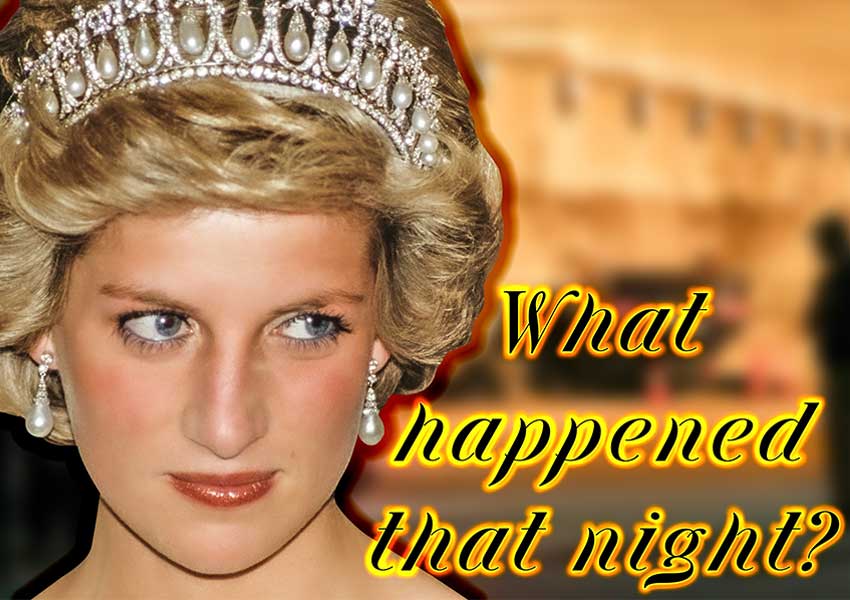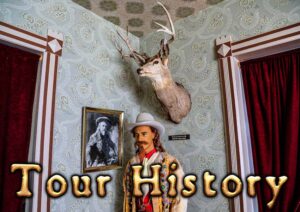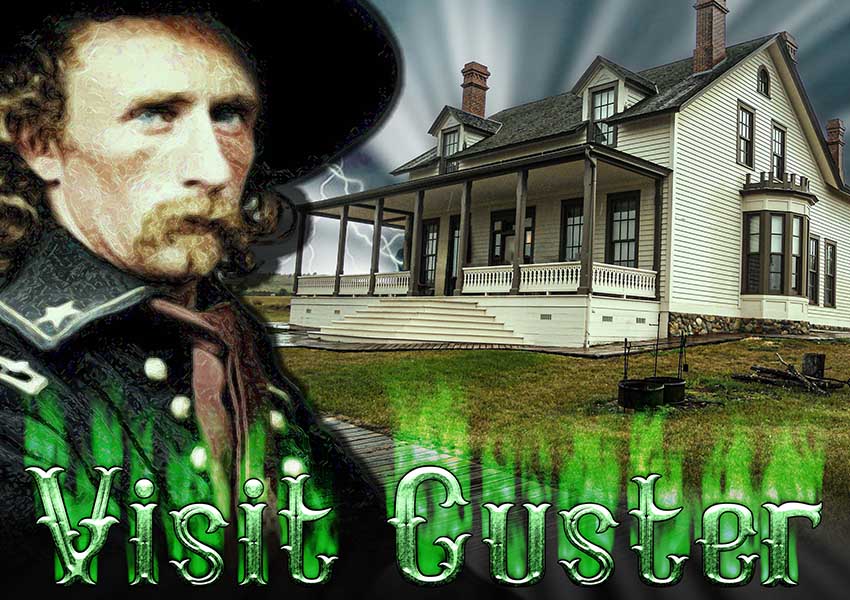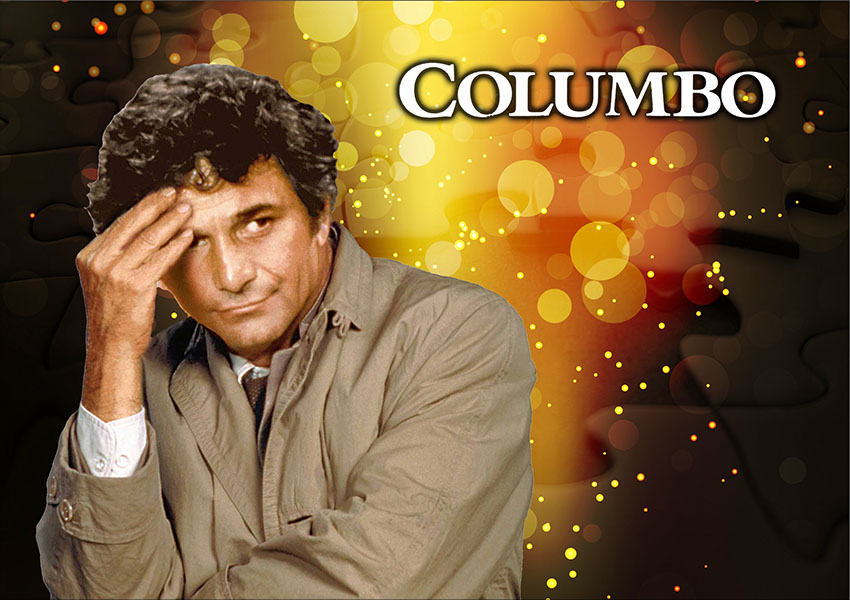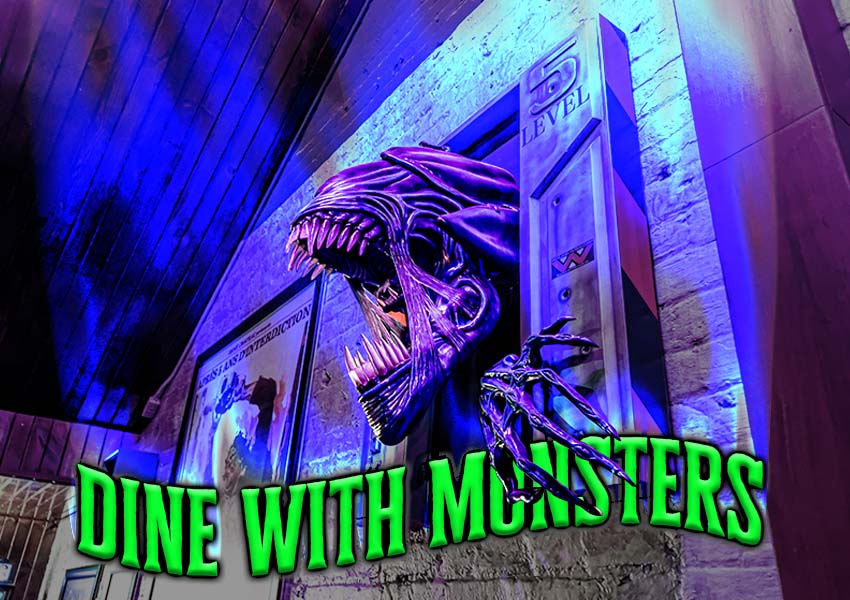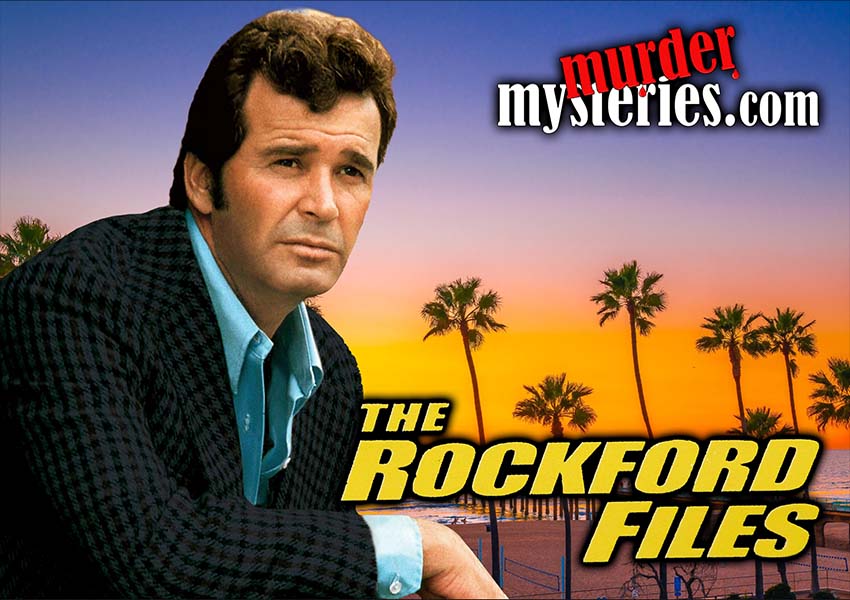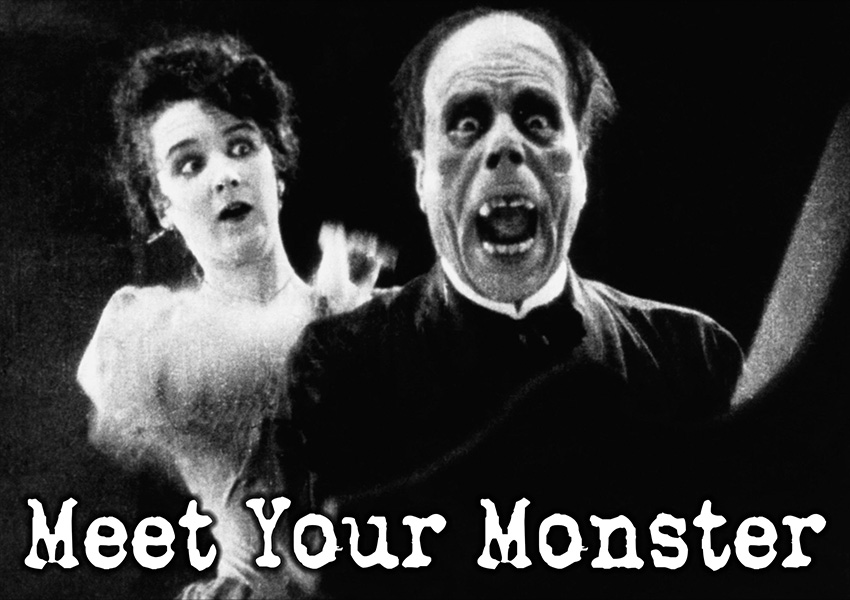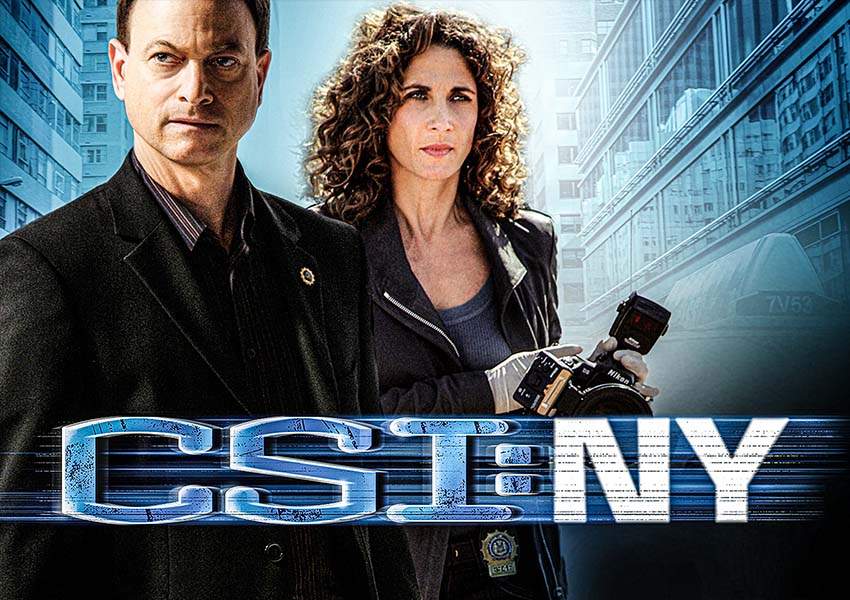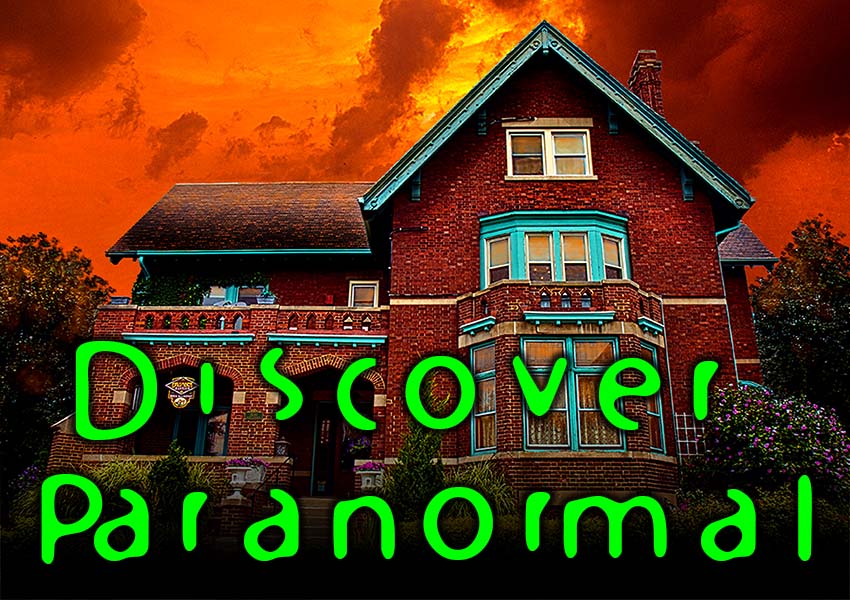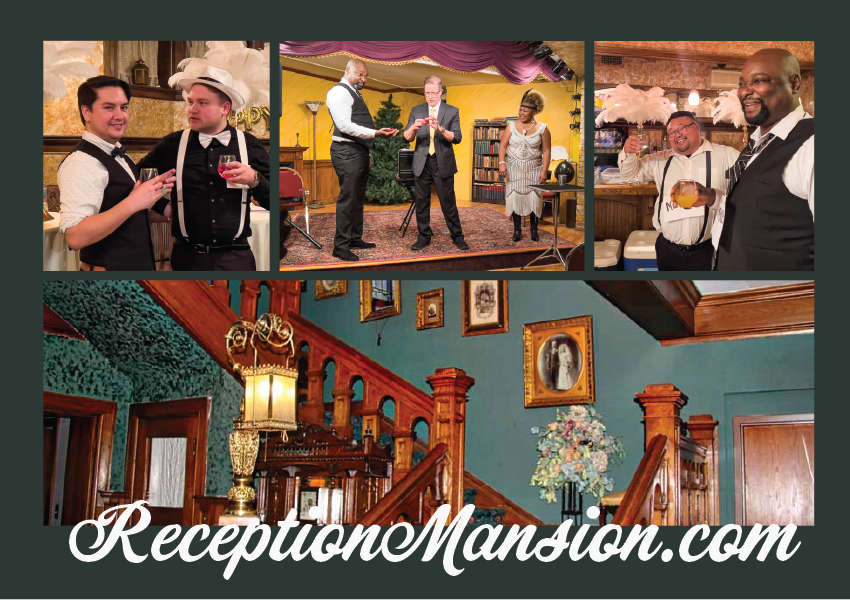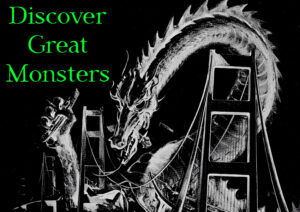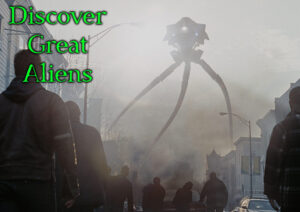Ogden Utah
Union Train Station
People like to stay with or visit their special possessions on display at Union Station.
A spectral woman still relives her emotional breakdown.
Spirits of people killed in a deadly train crash making themselves feel better here.
A few spirits of soldiers who died of their wounds find ways to entertain themselves.
A spirit of an employee doesn’t believe that he
died in an accident here and still shows up to work!





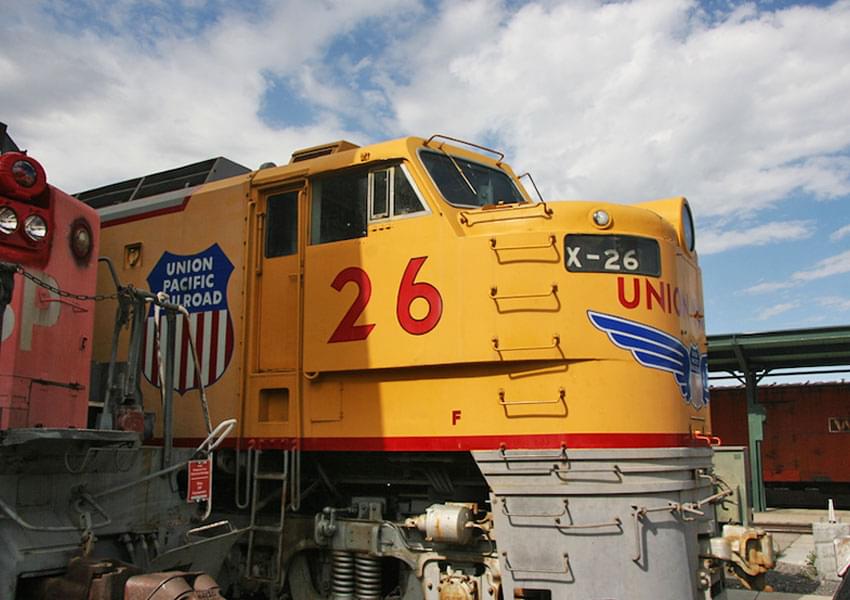


DESCRIPTION
The Union Pacific Railroad tried to redeem itself by building a truly beautiful railroad depot building, with pleasing qualities that made everyone happy then, and now as well. The Union Station grand lobby; (112 by 60 ft) of this historic train station is truly impressive with it “searing cathedral ceiling,” “grand entrances,” and a beautiful mural along the top of the walls. Besides the grand lobby, this grand building that sits on three acres is put to good use.
While the Union Pacific Depot is no longer a transportation hub, the non-profit group, The Union Station Foundation “operates the historic train depot that houses four museums and two galleries with a mission to preserve and enhance the Ogden Union Station and its collection and to promote and protect the heritage of Utah and the American West.”
The Union Pacific Depot is the home of an indoor and outdoor Utah State Railroad Museum, and The Eccles Rail Center, located in the side yard outside the station. There are actual train cars and engines, used throughout the Union Pacific Depot’s long history of service. The visitor can also get a good look at some of the locomotive engines on display.
Besides The Utah State Railroad Museum, and the Eccles Rail Center, there are other museums, one gift shop and two art galleries. The gift shop and galleries are located around the edge of the grand lobby, in the store spaces. The John M. Browning Firearms Museum, Utah Cowboy and Western Heritage Museum and the Browning-Kimball Classic Car Museum are the three mini-museums that are part of the Union Railroad Museum buildings.
They have put this historical building to work offering seven location venues within the historic structure for community and private social events. This lets the public experience the various places in this historic building when they rent the space of their choice for their special event. This brings in funds to keep the financial books in the black. Listed below are some of the areas that are wonderful spaces.
The Grand Lobby of the Union Pacific Depot is a perfect place for large events and wedding receptions, being able to handle 400, five ft. round tables, or 500, eight ft. tables.
There is the 5,060 sq. ft. Browning Theatre, that is used for presentations for the other museums, but that can also be rented for events of all kinds. If used as a theatre, 425 people can be seated, and has an actual stage, stage lighting, and two dressing rooms. Chairs can be moved, providing room for banquets for 350 people, and a kitchen to prepare catered food. There can be a dance floor, making it perfect for receptions, and social events. Of course, an electronic screen, projector and microphones are available for classes, seminars, and the like.
Overlooking the train yard of the Eccles Rail Center locomotives, the Old Timers Room is a bright and light space, perfect for wedding receptions, wedding luncheons, parties and meetings.
The Myra Powell Gallery, that is home to the Union Station’s permanent art collection, is a unique “artsy space” used often for small ceremonies, receptions or luncheons.
The Gallery 51 also is a nice place for meetings, luncheons, weddings and receptions.
HISTORY
Because of a generous donation of land from LDS founder, Brigham Young, Ogden was the Utah city that was picked in 1886 to have the large depot for the Union Pacific Railroad and Central Pacific Railroad, replacing a rather woe-be-gone eyesore of a wooden train station, that was an embarrassment to the community. Architect Henry Van Brundt and his Van Brundt & Howe firm in Kansas City, Missouri designed plans with a Romanesque, Victorian flavor. In early September of 1886, Adams commissioned Francis M. Sharp of Kansas City as the building contractor. Construction began immediately, and by late December the sandstone foundation was laid.
This new permanent depot was finished in July of 1889, shared by Union Pacific and Central Pacific Railroads. The transcontinental trains that passed through Ogden depot were express trains, accommodation trains and an emigrant train. Utah Central’s service offered two passenger trains and two mixed trains, that had both passenger and freight cars.
This much larger Victorian stone building had a grand clock tower in the middle of the two wings of the depot. “Both the north and south wings were built with two floors. In the center was a three-floor building with a clock tower, and the roof was finished with dormers replacing the suggested Romanesque steeple and spirals. Included in the design were 33 hotel rooms in the south wing. In the center upper floor were railroad offices, including the superintendent’s office, with the lower floor taken up by ticket offices and waiting rooms. In the north wing was the baggage handling facilities and an emigrant waiting room.”
The town of Ogden did some major downtown development to go along with this new stone train depot. There was even a tunnel that was built from the train station under 25th street that was used to deliver supplies to businesses along 25th street, and travelers as well to the downtown hotels during inclement weather. Dirt roads and rain or snow made quite an awful mess.
Growth continued in the city of Ogden and for its train depot; a very busy place indeed, becoming one of the largest railroad centers in the West. In 1889, a train came through every fifteen minutes. “During the early part of the 1900s, the depot handled 76 passenger trains a day. By the 1920s, Ogden was experiencing explosive growth in railroad traffic. The number of freight and passenger trains grew almost daily, with 1921 being the peak year for passenger train revenues on Union Pacific. (Hunter, Beneath Ben Lomond’s Peak, p. 428).”
After 30+ years, the people of Ogden wanted a brighter and more modern building to replace this now aging Victorian structure. In 1923, a fire broke out from an unintended iron left too long on a pair of pants in the hotel section that heavily damaged the clock tower, its three floors within, and the roof around it. Luckily, no one was hurt. The people of Ogden were hoping for a new building, but the railroad folks didn’t want to spend the money to rebuild the structure, and just repaired the fire damage that gutted the clock tower, its rooms and roof, despite all the money they were making.
While the repairs were being done, the cashier’s office was moved to the train platform, which turned out to be a very bad idea; an accident waiting to happen. Frank Yentzer had been working for the railroad depot for four years, and had recently been promoted to the cashier’s office. While working at this train platform cashier’s office, men above them were repairing the roof, using roof supports. When a huge gush of wind knocked one of the roof supports loose, it hit one of the stone decorative corners located on the building facade. Uh oh! This 250 lb stone fell and hit Frank, killing him instantly, ending his life goals and dreams, and separating him from his young family.
Because of the huge public outcry, the railroad folks buckled under public pressure, relented and finally tore down the old building and built the building that now stands on top of the 1889 old foundation and basement. It was designed by John Parkinson, Frank Parkinson, and Donald D. Parkinson, and the new Union Pacific Depot/ opened its doors in 1924. It was and is a beautiful building!
Ogden historian Richard C. Roberts described the new depot this way:
“Its architectural design is Italian Renaissance of the style which flourished in the fifteenth century in Europe. The building is 374 feet long and an average of 88 feet wide, with a waiting room of 60 feet by 112 feet, and a ceiling height of 56 feet. The ceiling and roof are supported by six huge wooden trusses which are made from Oregon or Douglas Fir. The trusses were ‘highly ornamented in brilliant colors’ and ‘attractive designs,’ (which have since been painted over). The roofing is of a Cordova Spanish tile. The brick is a pink buff brick produced in Ogden and faced with Boise sandstone. The two main entrances on the east of the building are carved Boise sandstone. The designs in the sandstone are of ‘fruits,’ featuring mostly clusters of grapes. Over each entrance door is a carved buffalo.”
In front of the station, a large, beautiful fountain was built as well. A park of flower beds and trees were also planted to provide a beautiful green space for the people of Ogden.
During the late twenties through the thirties, a variety of people traveled through Ogden; from movie stars and the well-to-do to every day folk, to those who were not squeaky clean profession-wise. 25th Street had become a rough part of town; especially along 25th Street. During Prohibition, the Bigalow Hotel became a long term residence place; (1929-1932), as well as a hotel, to make ends meet, until it was rescued by a rich citizen.
As it was in other cities where underground tunnels were built, the criminal element slithered in and used the tunnel to traffic their illegal hooch, drugs and prostitutes to the Bigalow Hotel, and any other place like the bars along 25th Street. Prostitutes probably also solicited rail customers to come with them into the tunnel for a “quickie,” or for a “roll in the hay” at The Bigalow Hotel.
Union Pacific Depot/Railroad did its part during WW2. The military used trains that ran through this depot to move troops across the country to military bases and deport destinations. The wounded were also transported to recovery centers in hospital train cars.
On December 31st, 1944, a mail train ran into a passenger train near the Union Pacific Depot, killing forty-eight people, and hurting seventy-nine others. This tragic event was called The Bagley Trai Disaster. The downstairs ballroom was the temporary morgue for the bodies.
By 1946, 140 trains were moving through Ogden every day, counting both eastbound and westbound movements. (Salt Lake Tribune, October 2, 1949). Before the common appeal for the average citizen to use the airline industry in travel, the train enjoyed a healthy income from people using the train.
Union Pacific Depot/Railroad did its part during the Viet Nam War. During the 1960s’, the remains of soldiers who were killed in Viet Nam, traveled in their individual caskets to Union Pacific Depot in Ogden. Their coffins were stacked high on the loading docks, with their individual routing tags on them to insure their final return to their families waiting to bury them.
The end of the Union Pacific Railroad Depot began in 1961 when the the Utah State Tax Commission directed Weber County to raise its property tax assessment rate on the entire property of this Ogden Union Railway & Depot Company; a whopping 7 percent. Union Pacific and Southern Pacific both came to the conclusion that this depot had outlived its usefulness and profitability. More and more people were traveling by car and plane, and the cargo business was also slowing down.
They figured out a way to offer more efficient service without going through this depot in Ogden. Of course, they had to jump through the bureaucratic hoops, but finally were able to do so. In May of 1971, Amtrak took over the passenger train service. By November of 1972, there was only one eastbound Amtrak train, and one westbound Amtrak train per day using this depot building.
The idea of using their glorious Ogden Union Pacific Depot building as a community center started with a 1969 celebration of the driving of the golden spike. This idea in the form of a proposal was suggested to the railroad folks, before Amtrak took over the passenger train service. The people of Ogden wisely put in an application right away in 1969 to get their train depot placed on the National Register of Historic Places, which happened on April 11th, 1971.
They knew that Pacific Union Railroad was going to sell everything to get their investment out, which may include selling their buildings and land to the highest bidder, which may well be an itchy-fingered developer. The city of Ogden had a long history of tearing down old buildings to build something better. In May of 1972, the Ogden Union Railroad’s freight depot was sold and demolished because it no longer was going to be used, and the land could be an asset for something else.
The event, however, that spurned on the desire for a museum and community center in this still glorious building was an art auction and dinner that was held in the depot’s main lobby, to raise funds for the Bertha Eccles Community Art Center on November 3rd, 1972.
A committee of civic leaders and railroad officials formed and got together to detangle the details of selling this property to the city of Ogden. In 1973, The Union Station Development Corp was formed to manage and operate this soon-to-be city property. By 1977, this property was turned over to the city of Ogden after a deal for its sale was worked out, which made everyone happy; including the railroads and the state of Utah. Renovation and restoration began immediately. On October 21st of 1978, a big dedication ceremony dedicated this new museum and community center.
Both Union Pacific and Southern Pacific began the railroad museum by donating train engines and cars, and railroad items. Other donations were sought, and corporations and other train stations gave generously. The state of Utah made this railroad museum the official Utah State Railroad Museum on February 26, 1988.
In 1991, the U. S. Hill Air Force Base donated a collection of thirty-five former military cars and locomotives. Twelve items that were in the best condition were saved for the collection, while the rest were sold for scrap. The money that was gained from this was used to restore the twelve pieces that went into the collection.
HISTORY OF MANIFESTATIONS
People who are overcome by their emotions can unintentionally kill themselves through rash actions leading to risky behavior that causes deadly accidents.
A young couple broke their engagement in the middle of the rail yard when the groom-to-be breaks his former beloved’s heart by canceling their relationship. To top it off, the heart-breaking jerk of a fiancee in a moment of emotion-driven spite took her engagement ring and threw it on the train tracks. The distraught young woman, blinded by tears, ran screaming and jumped down to get her ring and was hit by a train.
During Prohibition and the Great Depression years in America, the existence of the black market for hooch, drugs and prostitutes created a lot of pain and death for those who were involved in this risky business of providing this seedier entertainment.
Prostitutes could meet their demise in many ways. They had to worry about their treatment by both their customers and the people who pimped for them; not known for their kindness and understanding. They had to worry about sexually transmitted diseases and pregnancy, that usually ended in an abortion from questionable sources, such as opium-based medication. Emotionally, they took a toll as well. Some killed themselves if they couldn’t find a man to marry them and take them out of this life.
Some may still be trying to get some business opportunities to occur in the lobby and the second floor areas of Union Station.
People who die in unexpected, quick, sometimes violent ways due to accident have been known to stay where they died or in a nearby building; not willing to accept their death; perhaps trying to act in a way that would’ve changed the outcome of their deaths, or by not facing their deaths by continuing on with their lives as best they can in spirit form.
People who died in the train crash but were supposed to get off at Union Station may still want to be alive and try to “will it”, by continuing on their way through the station lobby.
People who have unexpected deaths while working at their jobs may not want to stop doing their job just because they are dead, but want to continue in this world to reach their goals and continue living the life they loved.
Frank Yentzer died in the falling stone accident, putting a sudden end to his life that he loved, with a job he enjoyed and a family whom he adored.
Soldiers who have died of their wounds, sometimes like to hang around the place or near the place that they died and possibly the place where their bodies were stored before burial.
People who have a strong connection to their stuff and items here in this world, often like to stay with or visit their special possessions. Many fire arms on display in the The John M. Browning Firearms Museum have former owners in spirit form still attached to them, and who make their presences known.
MANIFESTATIONS
Lady in Blue
Visitors and staff are frequently startled by disembodied, distraught wailing of a woman in extreme emotional pain.
The sight of a spectral woman dressed in a radiant blue dress running through the old rail yard sometimes is experienced with the wailing, sometimes not.
Entity of Frank Yentzer
He is thought to be still working as a cashier.
He perhaps is the one who uses the elevator, going up to the second floor, perhaps on his way to work.
Entity of Male Spirit called Yehudi
In other stories found on hauntedhouses.com, entities of soldiers find ways to amuse themselves, sometimes at the expense of the living.
Perhaps he is one of the spirits of the soldiers hanging around, who has decided to stay and enjoy himself here.
He gets his chuckles by playing with the alarms.
He has a flirtatious nature toward the ladies, and has been known to touch living women.
He likes to open the windows high above the ground floor, where the living can’t easily shut them.
Female Entity
She likes to walk the second floor halls and tries to talk to the men she sees.
Unknown Entities
Strange mists and shadows are seen moving through the grand lobby.
Entities of children have been heard playing in the main lobby.
Foot steps are heard by visitors and staff.
Entities of Soldiers
Visitors and Security Guards have seen entities of soldiers dressed in old military uniforms walking around the The John M. Browning Firearms Museum in older military uniforms, perhaps admiring the exhibits as well as reminiscing about their former arms possession.
Entity of a Gentleman
Seen with a long, handlebar mustache dressed in a Civil War Uniform
He has been seen walking around the The John M. Browning Firearms Museum enjoying the exhibits.
STILL HAUNTED?
A big “Yes Indeed” is in order. The Union Pacific Depot/Railroad Museum is a popular place for spirits for a variety of reasons. Environmental triggers like the huge collection of old fire arms, the beautifully restored lobby, the old trains and cars, past experiences and memories have drawn a variety of spirits to hang around, and let the living know that they are here.
For a very long time, the Union Pacific Depot building has had many reports of paranormal experiences, the whole sports package in fact.
Paranormal investigations from many groups have backed up the experiences that have been reported.
LOCATION
2501 Wall Ave
Ogden, Utah
Union Pacific Depot/Railroad Museum is located at the west end of Historic 25th Street, just south of the Ogden Intermodal Transit Center. Way at the other end of Historic 25th St. is the historic Bigalow Hotel, now called The Ben Lomond Historic Suites.
SOURCES INCLUDE
- The Ghost Hunters Field Guide
by Rich Newman
Llewellyn Publications – 2011 - thedeadhistory.com
- utahrails.net/ogden/ogden-ourd.php
- Union Station Wikipedia page
- saltlakemagazine.com
- what-when-how.com
- utahparanormalresearch.com
- www.deseretnews.com
Our Haunted Paranormal Stories are Written by Julie Carr
Our Photos are copyrighted by Tom Carr
Visit the memorable… Milwaukee Haunted Hotel
